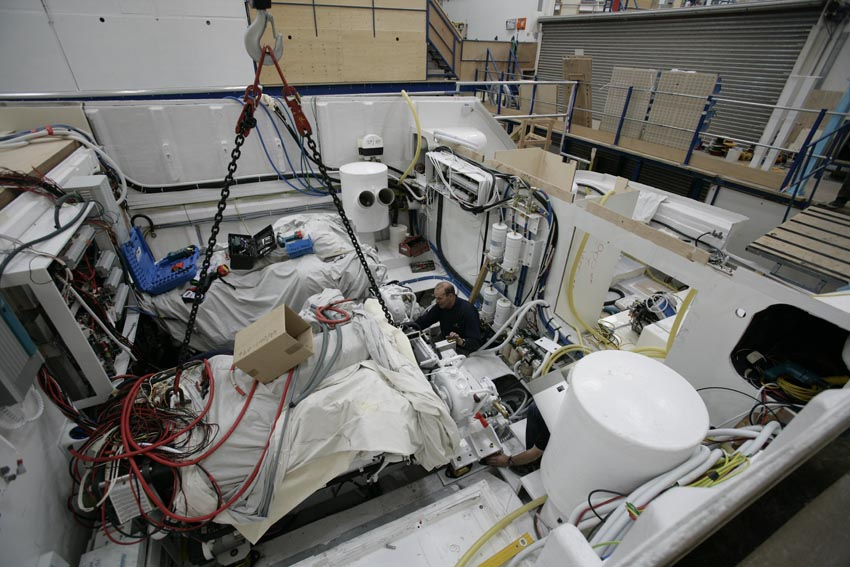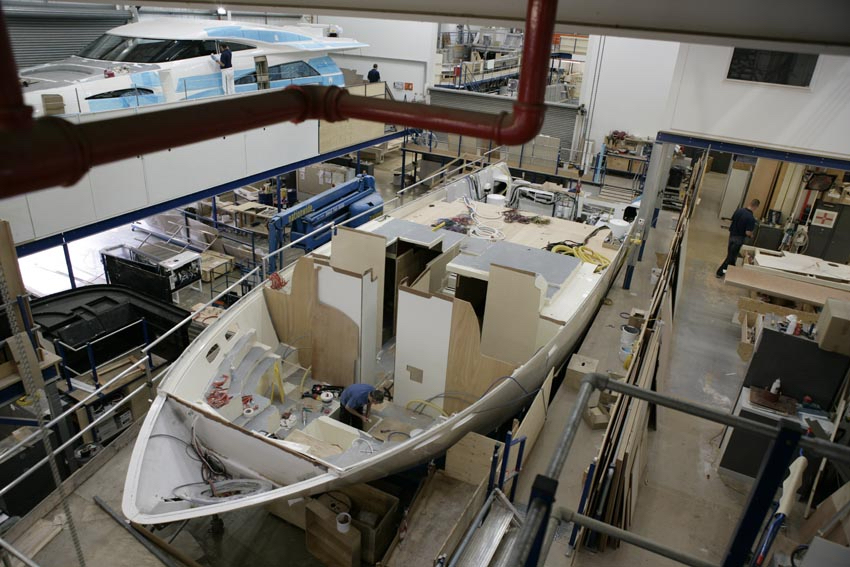
In Focus: Fit-out market enjoying ‘significant growth’
In the dynamic world of marine craftsmanship, the concepts of ‘fit-out’ and ‘refit’ stand as critical junctures in the lifecycle of a vessel, writes Edward Tuite, technical manager at British Marine. And now the sector’s considerable breadth is enjoying significant growth.
Both terms, while distinct in their application, underscore the intricate process of transforming a bare hull into a sea-worthy masterpiece or reviving an aged vessel to modern standards.

Businesses in the fit-out/refit sector vary from small local yards to large-scale companies like Setag Yachts, Pendennis, or Berthon. They’re catering to a diverse clientele, ranging from individual yacht owners to larger companies outsourcing parts of the fit-out process.
A noticeable trend in this sector is the shift towards sustainable solutions, such as electric and hybrid propulsion systems. This change is especially prevalent in inland vessels and smaller yachts, mirroring the broader industry’s movement towards environmental sustainability. Companies like ePropulsion are at the forefront of retrofitting electric drive systems, demonstrating the sector’s adaptability and agility in adopting innovative technologies and addressing environmental concerns.

While fit-outs and refits are both complex and require meticulous planning, their challenges differ in focus. Fit-out challenges revolve around implementing new designs within the physical and regulatory confines of a vessel. This includes design implementation, coordination of trades, material logistics, regulatory compliance, and tight time constraints.
On the other hand, refits grapple with their own unique challenges, especially when navigating the complexities of integrating new technologies within existing structures and adhering to regulatory changes.
The fit-out and refit sectors are poised for continued growth and innovation.
In conclusion, both fit-out and refit, although intricate and facing unique challenges, remain a dynamic and vital component of the maritime industry. With the sector’s commitment to adopting evolving technologies, changing consumer preferences, and stringent environmental standards, it stands well-positioned for ongoing growth and innovation. As the maritime industry evolves, the fit-out and refit sectors will undoubtedly remain at the forefront of shaping its future.

Defining fit-out and refit
A fit-out encompasses a range of activities essential for outfitting a vessel with the necessary components after the completion of its hull and shell. This process involves the meticulous installation of joinery, electrics, navigation gear, and propulsion engines. It’s a transformative phase that not only breathes life into new builds but also revitalises existing vessels through refurbishment.
Refit, on the other hand, entails the repairing, refurbishing, or upgrading of an existing vessel to extend its life, improve performance, or alter its function. This could range from minor modifications to a complete overhaul, involving significant dismantling and reconstruction.
British Marine support for fit-out and refit professionals
British Marine provides support to the fit-out sector, offering guidance on regulatory compliance, technological advancements, and best practices. It disseminates technical reports, updates ISO standards, and offers specialist courses such as the British Marine Electrical Technician (BMET) and the Marine Electronics Installer (MEI).
The post In Focus: Fit-out market enjoying ‘significant growth’ appeared first on Marine Industry News.
